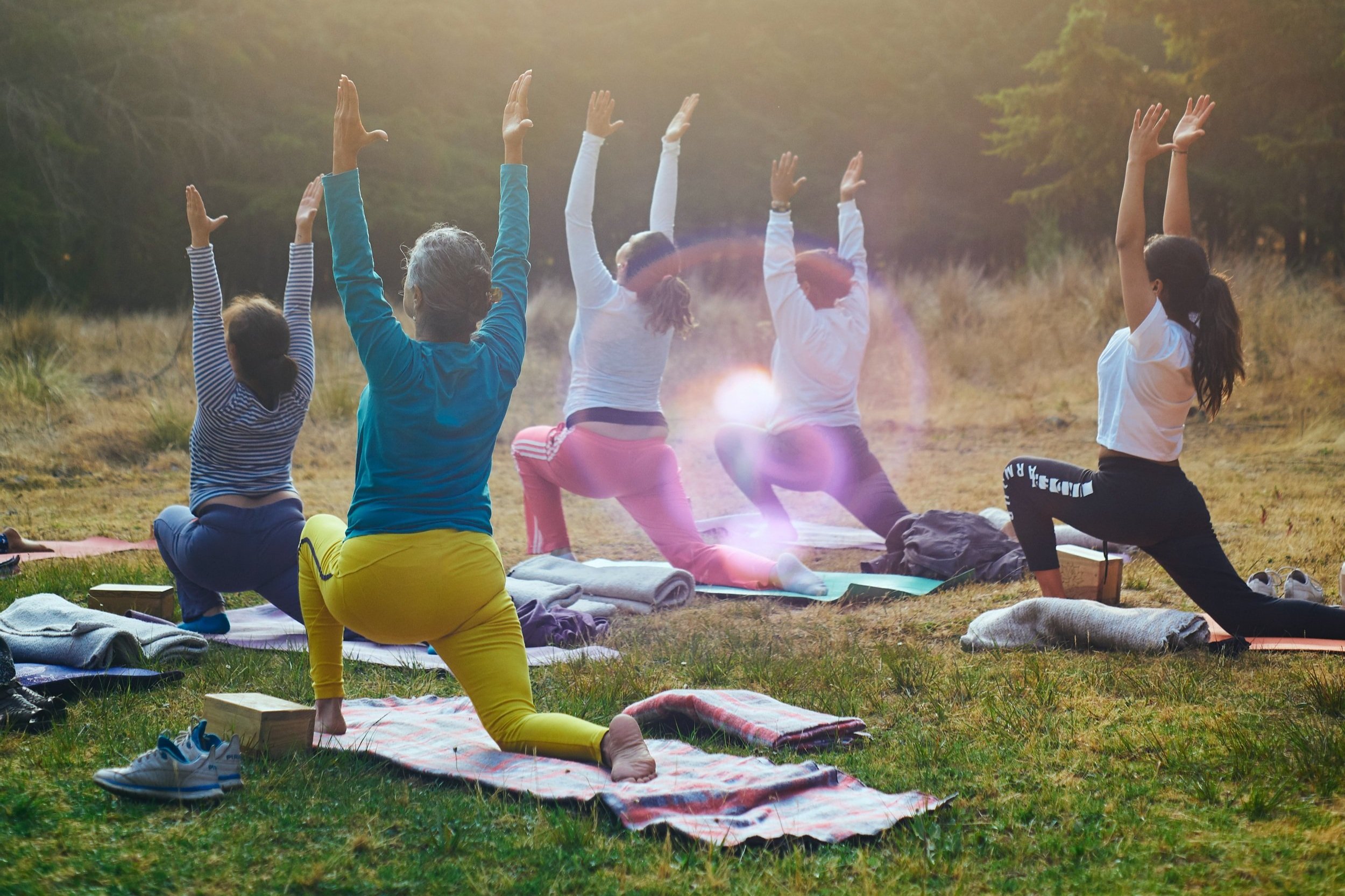Last year, as part of my role at Edinburgh Community Yoga I got to take part in an amazing 10 week journey of embodiment. The Embodied Women’s Project was a 12 month collaboration between Edinburgh Community Yoga, Womanzone and The Self Harm Clinic in NHS Lothian funded by The Queen’s Nursing Institutes Catalyst for Change Fund and has been an exploration of connection, relationships and present moment experience.
Successfully weaving together body based self-awareness practices, relationship building and nature based activities with current approaches to trauma recovery, we piloted a 10 week, co-created program that fully embodied what it means to be trauma aware and responsive. The project drew on prominent theories of trauma established by Bessel van der Kolk’s research and Judith Herman’s 3 Stages of Recovery, using non-traditional therapeutic approaches to supporting people with complex trauma.
The intention of the project was to reduce social isolation, increase interoceptive experiences and create safety in groups and relationships, all key elements of trauma recovery. What we discovered along the journey was something much deeper.
We met weekly and activities included walking in nature, meditation, equine therapy, visiting community gardens, arts and crafts, music medicine, exploring menstrual cycle tracking, cold water swimming and community cooking. There was more of an emphasis on having fun: a group of women coming together with shared experiences, venturing to new community spaces, trying unfamiliar activities, all the while supporting each other, safely led by facilitators.
Embodiment means to make something visible. Exploring our bodies, having an awareness of physical sensations, beginning to recognise what is arising so that we can make choices that suit our needs.
Making something visible, by its very nature can bring with it vulnerability. During one of the sessions a group of us got to experience cold water swimming. We made our way to a local beach, where we were welcomed by a certified swim coach. Cold water and wild swimming, in it’s nature can be a vulnerable activity. Navigating our anxieties, trepidation and excitement with the practicalities of undressing on a public beach, wearing swimwear and entering the sea in Scotland is exposing. But the connection, kindness, support and attentiveness I witnessed during this practice was one of the most beautiful experiences of the whole project. The collective courage, compassion and understanding was inspiring.
As with all funded projects, time was made for reflection. We encouraged reflection at the end of each session through meditation and journaling, and we then came together as a group for some collective, creative reflection. When asked to share five words or phrases that summed up the Embodied Project, an array of views came forward.
“‘Change, breathe, celebrate your strength, blossoming, togetherness, grounding, possibility, support, kindness, solidarity, empowerment, liberated, community, curiosity, whole body learning, connection, fun, inspiration, friendship, confidence and self assurance’ ”
The 10 week pilot project has now finished, but the experience stays with me. Co-leading this project with Lorraine from ECY, alongside an amazing team of therapeutic workers and a fantastic group of women has been an absolute privilege. This valuable, progressive approach to working with mental health and trauma is something I've been passionate about for many years. It was life saving for me at one point, and now being able to share these tools, experiences and practices with others, using a trauma informed peer approach, is a dream come true.
A huge thank you to ALL who made this project possible, it has left me hopeful for the future of mental health and trauma recovery within Scotland
“‘As human beings (not human doings) we long to come back to our senses, to experiences that allow us to feel a connection with the world.’ ”























